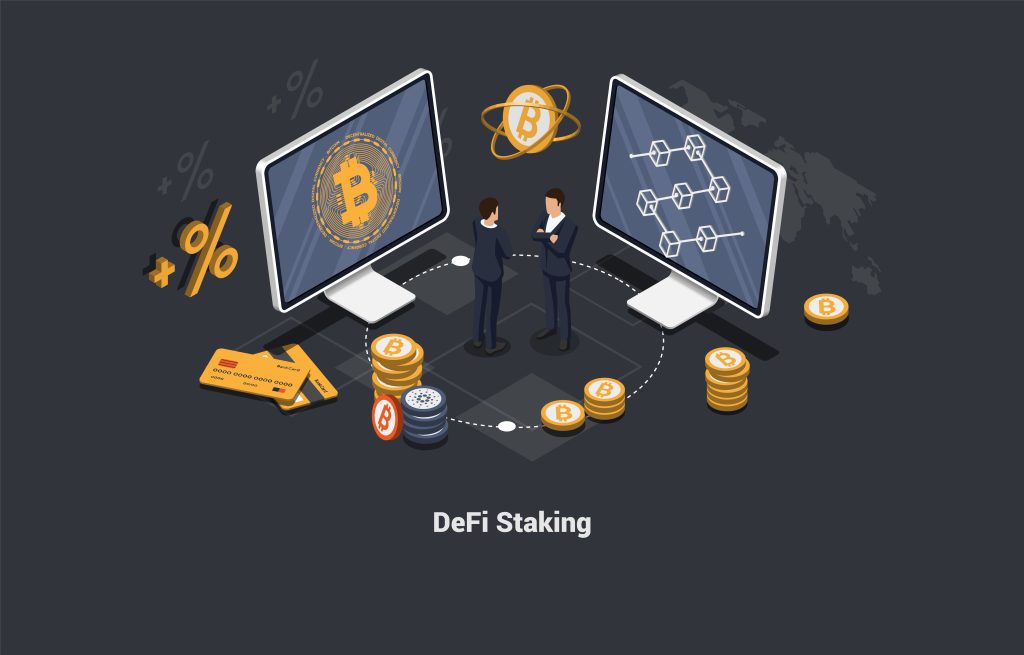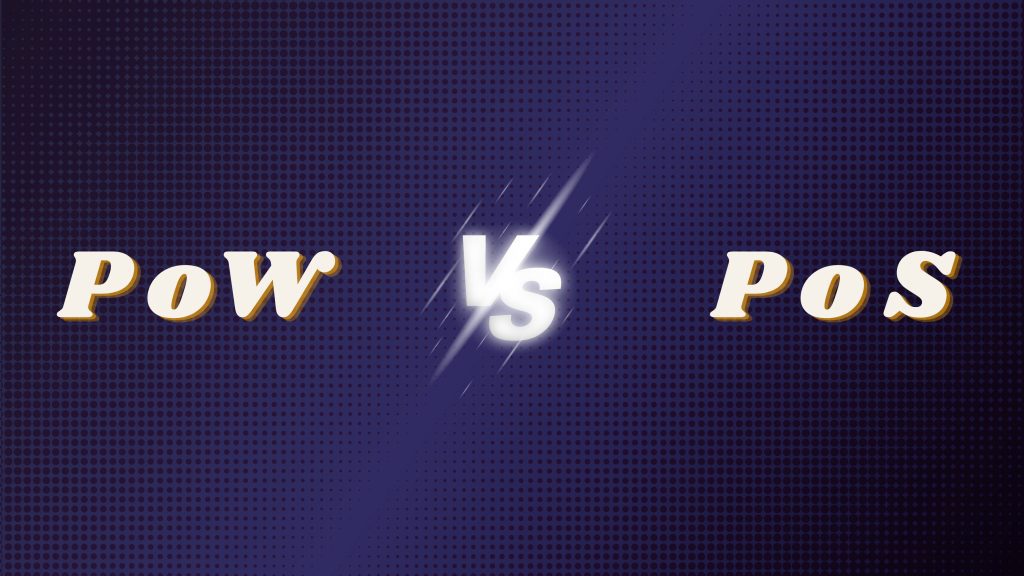The world of cryptocurrencies has witnessed significant advancements since the inception of Bitcoin. A critical aspect of these digital assets is the consensus mechanism, which ensures transactions are secure and trustworthy. Proof of Stake (PoS) has emerged as a popular alternative to the original Proof of Work (PoW) model, offering improved energy efficiency, scalability, and inclusivity. This article delves into the intricacies of PoS, its evolution from PoW, and how it operates. We’ll also examine the advantages and disadvantages of PoS compared to PoW, explore top PoS-based cryptocurrencies, and discuss potential risks and future implications. By understanding the mechanics behind Proof of Stake, we can better appreciate its impact on the blockchain ecosystem and its potential to shape the future of digital assets.
Decoding Proof of Stake (PoS) Value


Proof of Stake (PoS) is a significant development in the cryptocurrency world. It offers a more sustainable and efficient consensus mechanism than its predecessor, Proof of Work (PoW). In PoS, network validators are chosen based on the number of coins or tokens they hold and are willing to lock up as collateral, or “stake.” This new approach not only lowers energy consumption but also democratizes the process of maintaining the blockchain network.
PoS is gaining widespread attention for various reasons. First and foremost, its energy efficiency is a massive selling point. As the world becomes more aware of climate change and the need for sustainable practices, PoS offers a greener alternative to PoW. This eco-friendly approach can potentially attract a broader audience, encouraging the adoption of cryptocurrencies.
Moreover, PoS encourages decentralization by allowing a wider range of network participants to become validators. This decentralized nature improves security, as no single entity can control the network. Additionally, it creates a more inclusive ecosystem, where users with smaller holdings can also participate in the network’s governance.
Finally, PoS offers a passive income opportunity through staking rewards. Users who participate in staking can earn returns on their crypto holdings, making it an attractive investment option. This feature can draw more people to the world of cryptocurrencies, further propelling the growth of the PoS ecosystem.
Consensus Evolution: PoW to PoS
Proof of Work (PoW) was the original consensus mechanism that powered cryptocurrencies like Bitcoin. It requires miners to compete in solving complex mathematical puzzles to validate transactions and add new blocks to the blockchain. However, PoW is resource-intensive and consumes a significant amount of energy, leading to environmental concerns.
Proof of Stake (PoS) emerged as a response to PoW’s drawbacks. The goal was to create a more sustainable and efficient consensus mechanism. In PoS, the process of validating transactions and adding new blocks is done by network validators who stake their coins as collateral. This innovative approach reduces energy consumption and promotes a greener future for cryptocurrencies.
The evolution from PoW to PoS is indicative of the industry’s constant search for better solutions. As blockchain technology matures, new consensus mechanisms like PoS are developed to address the limitations of existing systems. This ongoing progress ensures that the technology remains relevant, secure, and adaptable to changing demands.
The growing adoption of PoS is a testament to its viability as an alternative to PoW. With major projects like Ethereum transitioning to PoS, the shift towards more sustainable and decentralized consensus mechanisms is becoming increasingly evident, marking a new era in the blockchain space.
How Proof of Stake Operates


Proof of Stake (PoS) is a consensus mechanism that operates by selecting validators based on the number of coins they hold and are willing to stake. The concept is simple, but it has profound implications for the way blockchain networks are maintained and secured.
In PoS, validators propose and validate new blocks by staking their coins as collateral. The probability of a validator being chosen to create a new block is proportional to the amount of crypto they have staked. This process encourages validators to be honest and maintain network integrity, as any malicious actions could lead to the loss of their staked coins.
Once a validator is chosen, they create a new block, and the transactions within it are validated by the rest of the network. If the network agrees that the block is valid, it is added to the blockchain, and the validator receives a reward for their work. This reward serves as an incentive for validators to continue participating in the PoS ecosystem.
PoS also allows for delegation, where users who do not have enough coins to become validators can still participate in the staking process. They can delegate their coins to a validator or join a staking pool, allowing them to earn a portion of the rewards. This delegation process encourages broader participation and strengthens the network’s decentralization.
One of the key benefits of PoS is its energy efficiency. Unlike PoW, which relies on intense computational power and energy consumption, PoS can operate with significantly less energy. This environmentally friendly aspect of PoS makes it an attractive alternative to PoW, especially in a world increasingly concerned with sustainable practices.
PoS vs. PoW: Pros and Cons


Now let’s compare PoS and PoW. While PoW has been popular, it’s energy-hungry and tends to centralize mining power. On the other hand, PoS is more eco-friendly, encourages decentralization, and provides better security. However, PoS isn’t perfect; it can lead to potential centralization if a few validators control a significant portion of coins.
| PoS | PoW | |
|---|---|---|
| Energy Efficiency | High | Low |
| Barriers to Entry | Low | High |
| Decentralization | Encouraged | At risk |
| Inclusiveness | High | Low |
| Security Concerns | ‘Nothing-at-Stake’ | N/A |
| Concentration Risk | Wealth concentration | Mining centralization |
Top Proof of Stake Cryptos
Curious about the big players in PoS? Some notable cryptocurrencies using this mechanism include:
These cryptocurrencies have implemented PoS in various forms and offer staking opportunities for users to earn rewards while securing their respective networks.
Staking Rewards & Passive Income


Proof of Stake allows users to earn passive income by staking their cryptocurrencies. By participating as a validator, users can receive staking rewards proportional to their stake. These rewards serve as an incentive for validators to maintain network integrity and perform essential functions like validating transactions and producing new blocks.
Staking can be done individually or through a staking pool. Also, staking pools aggregate individual stakes to increase the chances of being selected as a validator, thus ensuring a more regular income stream for participants. In other words, staking rewards vary depending on factors such as the size of the stake, the network’s inflation rate, and the staking pool’s performance. Users can research various staking options, assess potential rewards, and choose the best fit for their investment strategy. In summary, staking in PoS cryptocurrencies provides an opportunity to generate passive income while contributing to the network’s security and stability.
Proof of Stake: Risks & Challenges
We’ve talked about the perks of PoS, but let’s not forget the potential drawbacks. Some risks and challenges include the “nothing at stake” problem, where validators might support multiple chains to maximize rewards. Additionally, there’s a chance of centralization if a few entities own a large share of coins.
Risk of Centralization
- Wealth concentration: Wealthy validators can accumulate more tokens, potentially creating an uneven distribution of power within the network.
- Staking pools: While staking pools offer accessibility, they can lead to centralization if a few large pools dominate the network.
Security Concerns
- ‘Nothing-at-Stake’ attacks: Validators may vote for multiple conflicting blocks without risking their stake, undermining the network’s security.
- Long-range attacks: Attackers can create a fake blockchain history, potentially fooling new nodes into accepting fraudulent transactions.
Proof of Stake: Shaping Blockchain’s Future
Proof of Stake continues to gain traction as a more sustainable and inclusive consensus mechanism. The shift from energy-intensive Proof of Work models to environmentally friendly PoS alternatives highlights the blockchain industry’s commitment to reducing its carbon footprint.
As more projects adopt PoS, it is essential to address the risks and challenges associated with this consensus mechanism. The ongoing development of solutions like slashing penalties, checkpointing, and sharding will further strengthen PoS’s security and scalability.
Innovative projects like Ethereum 2.0, Cardano, and Polkadot showcase the potential of PoS to drive the next generation of blockchain technology. With an increasing focus on sustainability, accessibility, and inclusivity, Proof of Stake is poised to play a crucial role in shaping the future of blockchain and digital assets. As we continue to explore and embrace this consensus model, the blockchain ecosystem will undoubtedly evolve to become more efficient, secure, and environmentally conscious.








